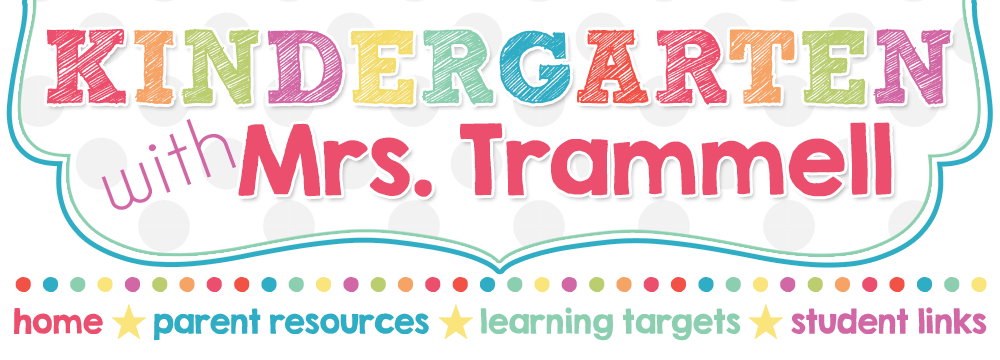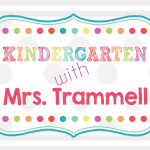We're learning about nouns! We've learned that nouns are people, places, and things. Here is a thinking map of the three types of nouns.
Look at some examples of people:
Here are examples of places:
We could think of many things:
Try going on a noun hunt in your home, your neighborhood, the store, or anywhere! What nouns can you find?
Thursday, October 22, 2015
Thursday, October 15, 2015
Making Connections
We've been reading several books about families lately. What an easy way to learn about something all good readers do: make connections! When readers make connections, they notice something in the book that reminds them of something they already know.
When we made connections as a class, we first noticed something important in the book. In one of the books we read, each time something happened in the text that reminded us of our families, we put a thumbs up. With another book, we were able to draw a picture of what happened in the text and then we drew another picture of our connection. Take a look:
Try making connections while reading at home!
When we made connections as a class, we first noticed something important in the book. In one of the books we read, each time something happened in the text that reminded us of our families, we put a thumbs up. With another book, we were able to draw a picture of what happened in the text and then we drew another picture of our connection. Take a look:
Try making connections while reading at home!
Tuesday, October 13, 2015
Rhyme Time
One of our goals is to recognize and produce rhymes. Here are some ideas on how to help your child with rhyming at home.
*One of the best things to do is to read nursery rhymes, like Mother Goose. It's a great way for readers to pick up on rhymes, syllables, phonemic awareness, and rhythm.
*When reading a rhyming book, try omitting the second rhyme and see if you child can figure out what word should be read.
*Sing silly rhyming songs. Two of our favorites are by Raffi and the Wiggles. Here is Down by the Bay and here is Willaby Wallaby Woo by the Wiggles (although Raffi does one as well). See if your child can think of new verses!
*Play a game! Say, I spy with my little eye something that starts with /m/ and rhymes with house. What is it? A mouse!
*Say a word. You and your child can think of as many words as you can that rhyme with the first word. Nonsense words count!
Have fun rhyming!
*One of the best things to do is to read nursery rhymes, like Mother Goose. It's a great way for readers to pick up on rhymes, syllables, phonemic awareness, and rhythm.
*When reading a rhyming book, try omitting the second rhyme and see if you child can figure out what word should be read.
*Sing silly rhyming songs. Two of our favorites are by Raffi and the Wiggles. Here is Down by the Bay and here is Willaby Wallaby Woo by the Wiggles (although Raffi does one as well). See if your child can think of new verses!
*Play a game! Say, I spy with my little eye something that starts with /m/ and rhymes with house. What is it? A mouse!
*Say a word. You and your child can think of as many words as you can that rhyme with the first word. Nonsense words count!
Have fun rhyming!
Sunday, October 11, 2015
Learning About the Main Idea
We're learning how to tell about the main idea of a book. There are a few clues we can use to help us. One clue is to look to the title. What does the title tell us . . . what the book is about! Another thing we can do is ask ourselves: what is this book mostly about?
We've read many books so far to talk about the main idea. One of the books we read to help us understand the main idea is Kevin Henkes' Wemberly Worried. What was this book mostly about? Wemberly worried about everything!
Not only did we determine the main idea, but we noticed the clues, or details, to help us figure it out. Take a look at the chart we made to help us show our thinking:
Another book we read is titled Gio and His Family. What was this book mostly about? Gio and his family and what they like to do together! How did we know that? Both the title and the events of the book told us! You may have seen a similar chart come home with your child that looks similar to the Wemberly chart (I forgot to take a picture of us completing it in action!).
When reading at home, see if your child can help determine the main idea of the book!
We've read many books so far to talk about the main idea. One of the books we read to help us understand the main idea is Kevin Henkes' Wemberly Worried. What was this book mostly about? Wemberly worried about everything!
Not only did we determine the main idea, but we noticed the clues, or details, to help us figure it out. Take a look at the chart we made to help us show our thinking:
Another book we read is titled Gio and His Family. What was this book mostly about? Gio and his family and what they like to do together! How did we know that? Both the title and the events of the book told us! You may have seen a similar chart come home with your child that looks similar to the Wemberly chart (I forgot to take a picture of us completing it in action!).
When reading at home, see if your child can help determine the main idea of the book!
Saturday, October 10, 2015
Sight Word Apps
We are learning more sight words by the day! Here are some apps that you might find helpful for your child. As with the handwriting apps, I do not have the storage to house all of these apps on my device, so I haven't personally checked each of these apps. I recommend that you check out the app first before you give it to your child. A website I like using as a mom to check and see if media is appropriate for my own sons is commonsensemedia.org. Happy sight word practicing!
Here are some apps for sight words in no particular order:
Here are some apps for sight words in no particular order:
Sight Word Ninja
(currently free)
(currently free)
(currently free)
Sight Word Learning Games
(currently free)
(currently free)
(currently free)
Sight Words that Teach Speech
(currently $0.99)
(currently $0.99)
Friday, October 9, 2015
Learning About Illustrations
Previously we've learned that there are three ways to read a book, and one of those ways is to read the pictures. Lately we have been learning about illustrations in a text and how they help us read a story. There are lots of things we can do to read the pictures!
First, good readers take a picture walk before reading the book. What is a picture walk? It's when readers take a quick look at the pictures in the text and think about these three questions: What is the book about? What do I think/predict is going to happen? What do I already know about this text? Picture walks help readers understand the book.
Another thing we've been doing with the illustrations in a book is learning to ask five questions: Who is in the picture? What are they doing? Where are they? When is it? Why do you think . . . ? Doing this helps readers know what is happening in the text. Readers can make connections or predictions based off the pictures in the text. It helps understand the sequence of the story as well.
In some books we've noticed that sometimes the illustrations tell the story more so that the words. We read Mem Fox's Tough Boris and enjoyed not only learning about Tough Boris but also realizing the story that takes place in the pictures as well.
Finally, we've learned that there is a relationship between the pictures in the story and the words on the page. They have to match! This will help us, too, when writing our own stories.
When reading at home, see what information your child can get from looking at the illustrations!
First, good readers take a picture walk before reading the book. What is a picture walk? It's when readers take a quick look at the pictures in the text and think about these three questions: What is the book about? What do I think/predict is going to happen? What do I already know about this text? Picture walks help readers understand the book.
Another thing we've been doing with the illustrations in a book is learning to ask five questions: Who is in the picture? What are they doing? Where are they? When is it? Why do you think . . . ? Doing this helps readers know what is happening in the text. Readers can make connections or predictions based off the pictures in the text. It helps understand the sequence of the story as well.
In some books we've noticed that sometimes the illustrations tell the story more so that the words. We read Mem Fox's Tough Boris and enjoyed not only learning about Tough Boris but also realizing the story that takes place in the pictures as well.
Finally, we've learned that there is a relationship between the pictures in the story and the words on the page. They have to match! This will help us, too, when writing our own stories.
When reading at home, see what information your child can get from looking at the illustrations!
Thursday, October 8, 2015
Monday, October 5, 2015
Counting, Counting, Counting
We're working hard on learning how to count. We're learning how to count to 100 (any beyond!) and learning how to count objects.
One of the things we do each day is use the 100s chart to count. This helps us learn what the numbers look like, which number comes next, and helps us work from left to right. Another thing we love to do is to sing and dance with Jack Hartmann's video: Count to 100. I love this video because the students can use so many senses while learning to count to 100. They can hear, see, and say the numbers. I've been know to put this video on for my own kids while traveling because it's good at getting the kinks out!
Last week our home link focused on counting up to your front door. We've ready many books about counting, but one that stands out is Christopher Counting by Valeri Gorbachev. Christopher counted everything! He counted everything in his backpack, he counted butterflies in the air, and he counted the peas on his plate. That got us thinking: what could we count? Can we count the number of pages in a book? Can we count how many socks are in the sock drawer? Can we count how many times we can dribble a ball? Can we count how long it will take us to make our beds? Yes!
We're not just counting by 1s. We're learning how to count by 10s as well. Counting by 10s will help us learn how to count by 1s. For example, what number does come after 49? When we make associations with counting by 10s, it will help us know the next number. We're counting backwards, too. Who doesn't love the finger play of Five Little Monkeys?
Also, we've learned how to use our fingers to count. This can get tricky with little hands. We've practiced counting with our index finger first and then moving across to the rest of the fingers and saving the thumb for last. When the thumb comes out too soon it can mess up too many of our counts. See us learning how to use our fingers the kindergarten way:
Finally, we're learning how to count objects. Our goal is make an accurate count, and we'll be able to do that by moving each object over to a new area so that we won't count it again. We're working on saying the next number only when we've moved an object--not counting too fast or too slow. Candy season is just around the corner. Next time your child gets a bag of Skittles or M&Ms, have them count each candy in the bag, and then count it again to make sure he/she got the count correct. Don't forget to move each piece!
Have fun counting!
Last week our home link focused on counting up to your front door. We've ready many books about counting, but one that stands out is Christopher Counting by Valeri Gorbachev. Christopher counted everything! He counted everything in his backpack, he counted butterflies in the air, and he counted the peas on his plate. That got us thinking: what could we count? Can we count the number of pages in a book? Can we count how many socks are in the sock drawer? Can we count how many times we can dribble a ball? Can we count how long it will take us to make our beds? Yes!
We're not just counting by 1s. We're learning how to count by 10s as well. Counting by 10s will help us learn how to count by 1s. For example, what number does come after 49? When we make associations with counting by 10s, it will help us know the next number. We're counting backwards, too. Who doesn't love the finger play of Five Little Monkeys?
Also, we've learned how to use our fingers to count. This can get tricky with little hands. We've practiced counting with our index finger first and then moving across to the rest of the fingers and saving the thumb for last. When the thumb comes out too soon it can mess up too many of our counts. See us learning how to use our fingers the kindergarten way:
Finally, we're learning how to count objects. Our goal is make an accurate count, and we'll be able to do that by moving each object over to a new area so that we won't count it again. We're working on saying the next number only when we've moved an object--not counting too fast or too slow. Candy season is just around the corner. Next time your child gets a bag of Skittles or M&Ms, have them count each candy in the bag, and then count it again to make sure he/she got the count correct. Don't forget to move each piece!
Have fun counting!
Subscribe to:
Posts (Atom)



















